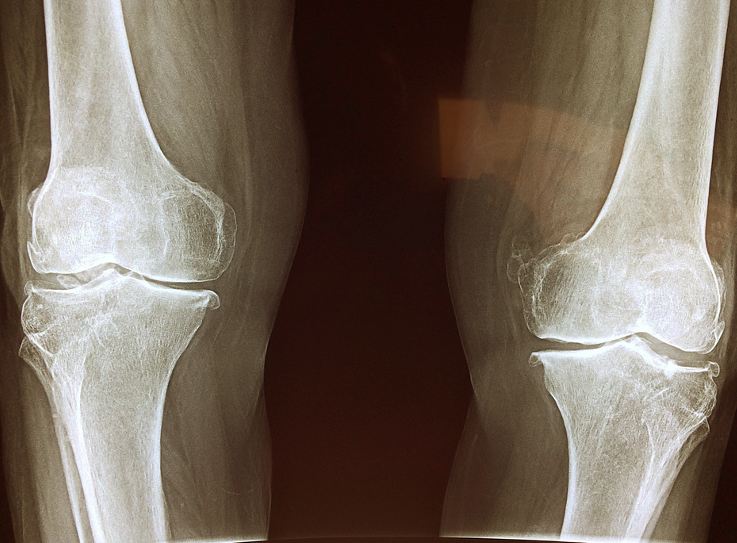Bone spurs, also medically termed osteophytes, are small outgrowths of bone that commonly form along the edges of bones. They are often caused by repetitive stress injuries or joint disorders, such as arthritis. While they are not typically dangerous, they can cause pain and discomfort. In this article, we will discuss how to prevent and reduce the risk of developing bone spurs.
What Are Osteophytes?
Osteophytes are small, bony outgrowths that form along the edges of bones. They are also known as bone spurs. Osteophytes can occur anywhere in the body where there is bone, but they are most common in the spine, shoulders, hips, and knees. Osteophytes are usually harmless and do not cause any symptoms. However, if they grow large enough, they can press on nerves or blood vessels and cause pain or other problems. In some cases, osteophytes can also make it difficult to move a joint. There are several different things that can cause osteophytes to form. The most common is aging. As we age, our bones become less flexible and more likely to break. This can cause the formation of osteophytes.
Other causes of osteophytes include:
- Injury to a bone or joint;
- Diseases that affect the bones, such as arthritis;
- Repetitive motions, such as those often seen in athletes.
Osteophytes are more common in people over the age of 50. However, they can occur at any age. If you have risk factors for osteophytes, you may be more likely to develop them. Some of these risk factors include:
- Being female;
- Having a family history of osteophytes;
- Having certain medical conditions, such as diabetes or obesity.
While most osteophytes are harmless, some can cause pain and other problems. If you have symptoms from an osteophyte, your doctor may recommend treatment. Treatment options include:
- Medications: Your doctor may prescribe oral or injected medications to help reduce pain and inflammation.
- Physical therapy: A physical therapist can teach you exercises that stretch and strengthen the muscles and ligaments around the affected joint. This can help relieve pain and improve the range of motion.
- Surgery: In some cases, surgery may be necessary to remove a large osteophyte that is causing pain or affecting movement.
What Is It?
Spondylosis is a general term for degenerative changes that occur in the spine. These changes can cause the formation of bone spurs, which are small outgrowths of bone that form along the edges of bones. Bone spurs can also form on other joints, such as the shoulders, hips, and knees. With spondylosis, the vertebrae of the spine slowly degenerate or break down. This can cause the bones to rub against each other and form bone spurs.
What Causes Spondylosis?
There are several factors that can contribute to its development:
- Repetitive stress injuries: Repetitive stress injuries (RSIs) are a common cause of spondylosis. RSIs occur when a joint or body part is repeatedly subjected to force or pressure. Over time, this repeated stress can damage the cartilage and bone in the affected area.
- Joint disorders: Joint disorders, such as arthritis, can also contribute to its development. Arthritis is a condition that causes inflammation and damage to the joints. This damage can lead to the formation of bone spurs.
- Age: Age is a major risk factor. The spine begins to degenerate as we age, which can lead to the formation of bone spurs.
How to Prevent It
There are several things you can do to prevent its development:
- Maintain good posture: Good posture helps alleviate stress on the spine and other joints. Try to stand up straight and sit up tall in chairs or when driving.
- Exercise regularly: Exercise helps strengthen the muscles and ligaments around the spine. This can help reduce the risk of developing spondylosis.
- Avoid repetitive stress injuries: If you are susceptible to RSIs, try to avoid activities that put repetitive stress on your joints and body parts.
- Maintain a healthy weight: Excess weight puts additional stress on the spine and other joints. Losing weight can help reduce the risk of developing spondylosis.
How to Treat It
If you have already developed spondylosis, there are several things you can do to treat it:
- Rest: Resting the affected joint or body part can help relieve pain and prevent further damage.
- Ice: Applying ice to the affected area can help reduce inflammation and pain.
- Heat: Applying heat to the affected area can help relax the muscles and ease the pain.
- Exercise: Exercise can help strengthen the muscles and ligaments around the spine. This can help stabilize the spine and reduce pain.
- Physical therapy: Physical therapy can help stretch and strengthen the muscles and ligaments around the spine. This can help stabilize the spine and reduce pain.
- Surgery: In some cases, surgery may be necessary to remove bone spurs or repair damage to the spine.
How To Keep Your Bones Strong And Healthy
There are many things you can do to keep your bones healthy and strong. Eating a balanced diet that includes plenty of calcium-rich foods is essential for healthy bones. Getting regular exercise is also important, as it helps to keep your bones and muscles strong. If you smoke, quitting smoking is one of the best things you can do for your overall health, including the health of your bones.
If you have a family history of bone problems or if you are at risk for developing osteoporosis, there are steps you can take to help prevent bone loss and reduce your risk of developing bone spurs. Taking a daily supplement of calcium and vitamin D can help maintain bone density and strength. If you have any concerns about your risk of developing bone problems, be sure to talk to your doctor.
Bone spurs can be painful and cause problems with movement, but there are ways to prevent them. By taking care of your bones and overall health, you can help reduce your risk of developing bone spurs. Talk to your doctor if you have any concerns about your risk factors for developing this condition. With the right preventive measures, you can keep your bones healthy and avoid pain and other complications associated with bone spurs. Make sure to consult your doctor if you think you might have bone spurs.


